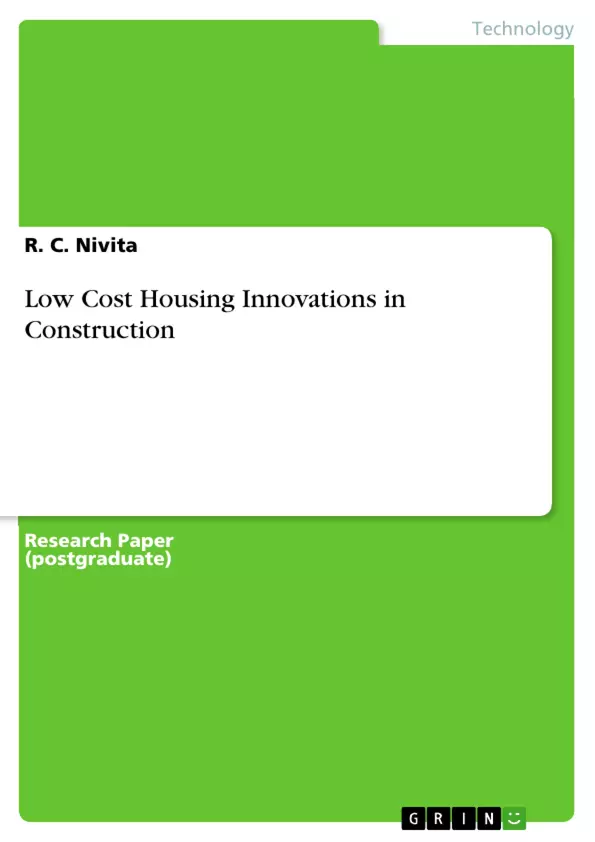Housing plays a crucial role in providing individuals and households with a dwelling, and it encompasses the housing industry, infrastructure, and housing market. Low-cost housing options are essential for individuals with limited financial resources, and housing assistance programs are commonly offered by governmental and non-profit organizations to support those unable to afford market-rate housing. Various types of affordable housing exist, including apartments, townhomes, and single-family homes, often designed for specific groups such as the elderly or individuals with disabilities. Natural materials like bamboo, earth, straw, fiber cement composites, lime mortar, surki mortar, mud, and grass are explored for low-cost housing construction. India, a significant bamboo producer, has 136 species of bamboo, making it a readily available material. Earth has been used as a building material for centuries, and compressed earth blocks and non-erodible mud plaster can address its limitations. Straw, a residual material from agriculture, particularly rice straw, with its high silica content, shows durability potential. Researchers have also shown interest in utilizing natural fibers from various plant sources as alternatives to conventional construction materials. Man-made materials like volcanic ash, aerocon panels, ferrocement, hollow blocks, rice husk panels, and reinforced concrete have been developed and utilized in construction. Precast construction materials, such as precast concrete panels, beams, and columns, offer advantages like rapid manufacturing, quality control, durability, and longevity. The study focuses on investigating a system of precast brick panels with partially precast reinforced concrete connections. The panels are cast using timber molds and affixed onto precast joints, reducing materials and costs compared to conventional reinforced concrete slabs. Overall, the study explores the utilization of natural and man-made materials for affordable housing construction, considering their availability, durability, and cost-effectiveness.
Inhaltsverzeichnis (Table of Contents)
- INTRODUCTION
- Materials for precasting
- RC channel
Zielsetzung und Themenschwerpunkte (Objectives and Key Themes)
This study investigates the use of natural and man-made materials for low-cost housing construction. The objective is to explore the feasibility of using precast brick panels and reinforced concrete connections in a system that reduces materials and costs compared to conventional RC slabs. The study also examines the use of various materials like bamboo, earth, straw, and precast concrete elements.
- Low-cost housing materials
- Precast construction methods
- Sustainability and cost-effectiveness
- Durability and longevity of materials
- Comparison of traditional and innovative techniques
Zusammenfassung der Kapitel (Chapter Summaries)
- Introduction: This chapter provides an overview of low-cost housing, its importance, and the various materials used in its construction. It explores the use of natural materials such as bamboo, earth, and straw, as well as man-made materials like volcanic ash, aerocon panels, and reinforced concrete.
- Materials for precasting: This chapter focuses on precast construction materials, highlighting their advantages such as rapid manufacturing, quality control, durability, and longevity. It introduces the study's focus on precast brick panels with partially precast reinforced concrete connections, emphasizing the cost-saving potential.
- RC channel: This chapter delves into the use of RC channels as structural components in precast construction systems. It describes the design and fabrication of these elements, their integration into the overall system, and the potential benefits they offer in terms of structural performance and cost-effectiveness.
Schlüsselwörter (Keywords)
Low-cost housing, precast construction, natural materials, bamboo, earth, straw, reinforced concrete, precast brick panels, RC channel, sustainability, cost-effectiveness, durability.
- Quote paper
- R. C. Nivita (Author), 2022, Low Cost Housing Innovations in Construction, Munich, GRIN Verlag, https://www.grin.com/document/1367903



